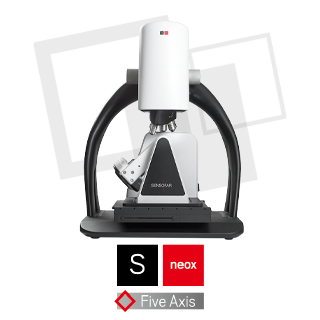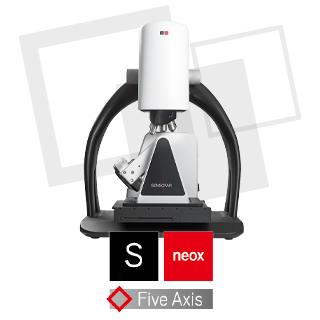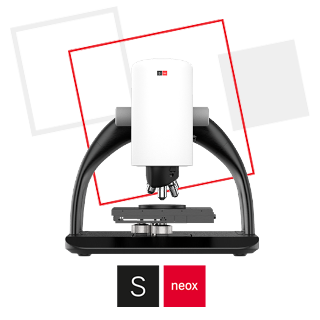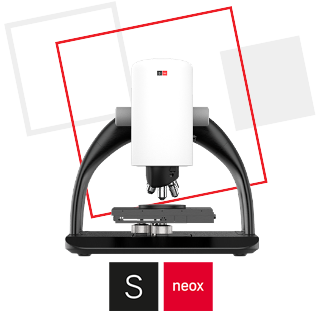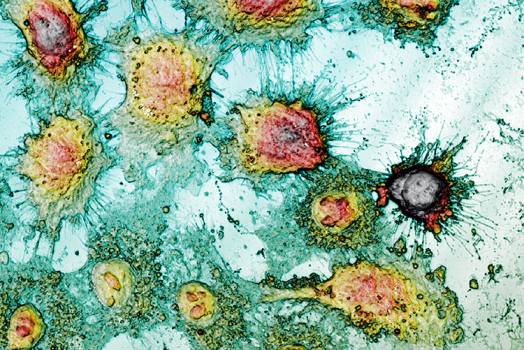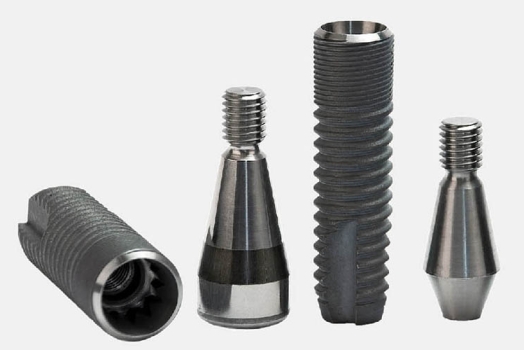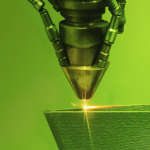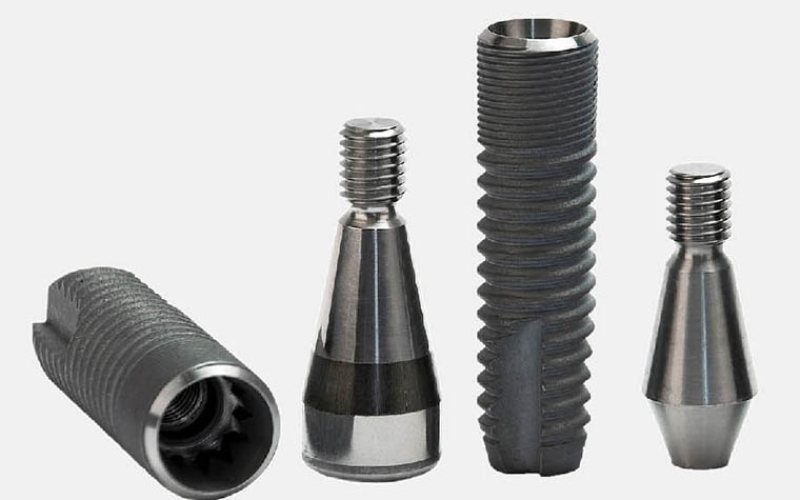
The effect of surgical insertion on dental implant surface topography
University of Mondragon (Surface Technology Group). Located in the Basque Country (Spain), the mission of the Surface Technology Group of this university is focused on the component surface analysis and development with the aim of functional optimization. To that end, the research is mainly focused on advanced surface metrology studies, on the effect of surface topography on functional behavior (tribology, corrosion, fatigue, fretting, and biological response among others) using both; experimental and numerical approaches.
Confocal technology is a non-destructive measuring technique that allows characterizing different locations in modern dental implant surfaces with high resolution
Surface topography is currently considered one of the most important surface properties regarding the biological response. Accordingly, an intense amount of implant research has been focused on the development of new surface treatments to increase surface roughness, aiming to enhance the biological response and ultimately, the osteointegration.
However, the higher peaks and features of the enhanced roughness may break and detach or be modified during the insertion procedure into bone. Therefore, an important aspect to consider, though often overlooked, is whether the increasingly complex surface features found on modern dental implants are retained after insertion.
The aim of this research was to investigate the impact of the insertion procedure on the surface topography of dental implants. To achieve this, it is necessary to evaluate if the surgical procedure degrades the enhanced surface roughness by measuring and comparing the surface topography both before and after insertion exactly at the same locations.
The present paper is a part of a research1,2 1-. Zabala, A. The use of 3D surface topography analysis techniques to analyse and predict the alteration of endosseous titanium dental implants generated during the surgical insertion. (Mondragon Unibertsitatea, 2015). 2-. Zabala, A., Blunt, L., Tejero, R., Llavori, I., Aginagalde, A. and Tato, W. Quantification of dental implant surface wear and topographical modification generated during insertion,. Surf. Topogr. Metrol. Prop., 8, no. 1, p. 015002 (2020), doi: 10.1088/2051-672X/ab61e5. carried out by Dr. Alaitz Zabala, Dr Wilson Tato, Dr. Andrea Aginagalde and Dr. Íñigo Llavori.
Wennerberg et al.3 3-. Wennerberg, A. & Albrektsson, T. Suggested guidelines for the topographic evaluation of implant surfaces. Int. J. Oral Maxillofac. Implants 15, 331–44 (2000). took the first steps in measurements’ standardization suggesting some guidelines for dental implant characterization: three samples in a batch must be evaluated, three dimensional measurements must be made at three evaluation areas (tops, flanks and valleys), the filter size must be specified, and at least one of each height, spatial, and hybrid parameters should be presented. In addition, Wennerberg et al. claimed that Confocal profilometers and Interferometers are the only acceptable methods to evaluate densely threaded oral implant designs.
This is one of the main reasons why the commercial 3D optical profilometer Plµ (former version of S neox, Sensofar Metrology, Spain) was chosen to carry out this work. This unique optical profilometer is the only one in the market that includes Confocal, Interferometry (Phase Shifting and Coherence Scanning Interferometry) and Focus Variation techniques embedded into the same optical instrument. This feature allows for quickly evaluating dental implants with different optical techniques. Many international dental research labs have used Sensofar’s equipment for dental implants surface characterization, validating the technology and making it one of the gold standards for this purpose.4-12 4-. Walter, M. et al. Bioactive implant surface with electrochemically bound doxycycline promotes bone formation markers in vitro and in vivo. Dent. Mater. 30, 200–214 (2014). 5-. Frank, M. et al. Polarization of modified titanium and titanium–zirconium creates nano-structures while hydride formation is modulated. Appl. Surf. Sci. 282, 7–16 (2013). 6-. D’Almeida, M., Amalric, J., Brunon, C., Grosgogeat, B. & Toury, B. Relevant insight of surface characterization techniques to study covalent grafting of a biopolymer to titanium implant and its acidic resistance. Appl. Surf. Sci. 327, 296–306 (2015). 7-. Andrukhov, O. et al. Proliferation, behavior, and differentiation of osteoblasts on surfaces of different microroughness. Dent. Mater. 32, 1374–1384 (2016). 8-. Bertolini, R., Bruschi, S., Ghiotti, A., Pezzato, L. & Dabalà, M. Influence of the machining cooling strategies on the dental tribocorrosion behaviour of wrought and additive manufactured Ti6Al4V. Biotribology 11, 60–68 (2017). 9-. Spies, B. et al. Stability and aging resistance of a zirconia oral implant using a carbon fiber-reinforced screw for implant-abutment connection. Dent. Mater. 34, 1585–1595 (2018). 10-. Medvecky, L. et al. Effect of tetracalcium phosphate/monetite toothpaste on dentin remineralization and tubule occlusion in vitro. Dent. Mater. 34, 442–451 (2018). 11-. Pierre, C., Bertrand, G., Rey, C., Benhamou, O. & Combes, C. Calcium phosphate coatings elaborated by the soaking process on titanium dental implants: Surface preparation, processing and physical–chemical characterization. Dent. Mater. 35, e25–e35 (2019). 12-. Aguirrebeitia, J., Müftü, S., Abasolo, M. & Vallejo, J. Experimental study of the removal force in tapered implant-abutment interfaces: A pilot study. J. Prosthet. Dent. 111, 293–300 (2014).
In our study dental implants were measured with confocal at four different locations (Fig. 1), both before and after insertion in cow rib bone (which mimics human bone, Fig. 2).
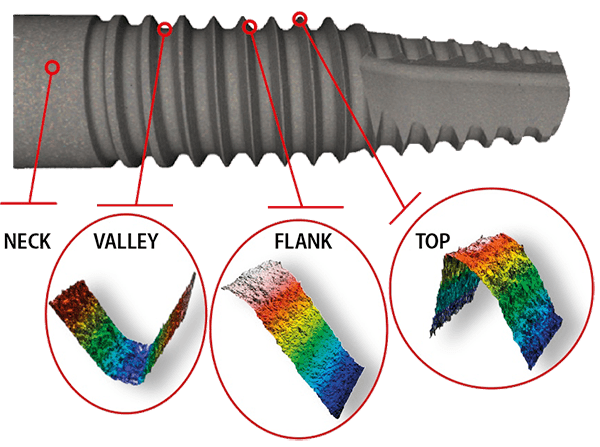
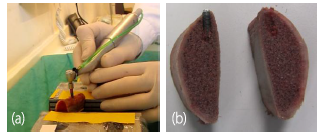
Due to the complex geometry of threaded dental implants, the measurement of different locations of the implants and the location of the same region both before and after insertion present a challenge.
Different locations were correctly positioned by means of an ad-hoc developed dental implant handling and positioning device with 3 degrees of freedom (Fig.3).
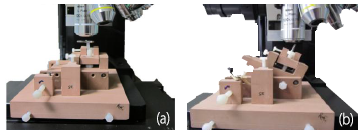

However, the most advanced Sensofar’s system includes a rotational module (i.e., S neox Five Axis) that enables an automated full three-dimensional surface characterization.
Measurements were acquired using a 100X SLWD magnification objective in order to acquire all topographical features in detail. The measurements were post-processed by means of the metrology software SensoMAP (Digital Surf) in order to remove form (second order polynomial fitting), noise (Gaussian filter cut-off 0.36 µm) and waviness (Robust Gaussian filter cut-off 50 µm). These values were considered optimal for this application given previous studies.1 Topographical parameters from ISO 25178-2 belonging to height, spatial, hybrid and functional families were calculated in order to fully characterize the surface properties.
Figure 4 shows axonometric representative projections of the measurements taken at the same regions before and after insertion for the acid etched implants. The sites that showed statistically significant topographical parameter variations (p<0.05) are marked with *. It can be noted that the sharp peaks initially present became less prominent or had completely gone after insertion in all the sites under study except the neck.
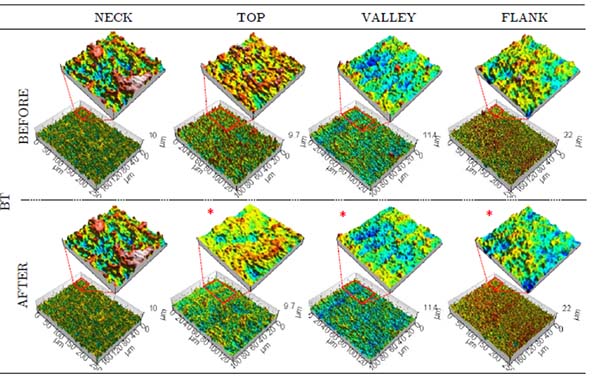
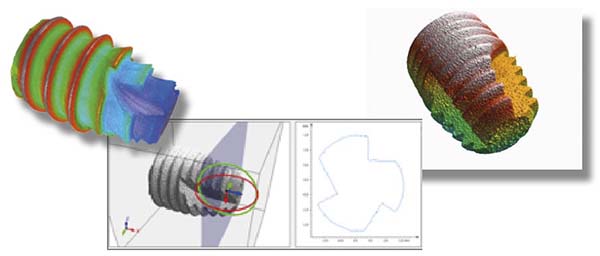
Confocal technology has been successfully used in this study to investigate the surface topography of dental implants. This non-destructive measuring technique allows characterizing different locations of the complex threated dental implants with high resolution. Qualitative and quantitative analysis were done to evaluate the surface modifications. The following main points can be concluded from the various components of this study:
Surface damage varied at different evaluation sites for each implant system (neck, top, valley and flank) and also along the implant within each site.
The developed interfacial ratio (Sdr) variation correlated positively with the material volume variation (Vm) and is considered to be the best damage indicator.
The use of functional volume parameters of ISO 25178 standard is suggested rather than the Rk family parameters defined in the European report EUR 15178N due to the higher sensitivity encountered.
The 3D optical profilometer S neox (Sensofar, Spain) has been shown to be an accurate tool to investigate the surface topography of dental implants before and after insertion into bone. More advanced tools such as the S neox Five Axis, would not only enable faster and more automated high resolution measurements, but also the 3D reconstruction of the complete dental implant’s shape, which can be of interest for wear analyses or quality control in further studies.




